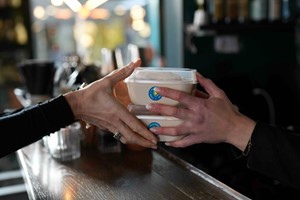In the fast-paced and ever-evolving landscape of the food delivery industry, technological advancements have become indispensable for businesses striving to meet the growing demands of consumers. Among the most transformative technologies driving this evolution is the Internet of Things (IoT). IoT refers to the network of interconnected devices embedded with sensors, software, and other technologies that enable them to collect and exchange data. In the context of food delivery, IoT solutions offer a multitude of benefits, ranging from enhancing operational efficiency to improving customer experiences. These innovations encompass a wide array of applications, including but not limited to real-time tracking of deliveries, predictive maintenance of delivery vehicles, smart inventory management systems, and even intelligent packaging solutions.
How does IoT Work?
IoT operates by linking everyday objects to the internet, enabling them to gather and exchange data in real-time. Consider a scenario where a household utilizes IoT-enabled devices. Each smart appliance, from thermostats to refrigerators, is connected to a central network. For instance, smart thermostats adjust temperature settings based on occupancy patterns detected by motion sensors, optimizing energy usage and enhancing comfort. Meanwhile, IoT sensors in refrigerators monitor food inventory and expiration dates, sending alerts to users' smartphones when items need replenishing or when temperatures deviate from the desired range. Additionally, wearable health trackers collect biometric data, such as heart rate and sleep patterns, syncing seamlessly with smartphones to provide users with personalized insights and recommendations for improving their well-being. These examples illustrate how IoT seamlessly integrates physical objects with digital capabilities, empowering users with valuable data insights and enhancing efficiency and convenience in everyday life.
Top of Form
IoT’s Potential in the Delivery Industry
The Internet-of-Things has a myriad of applications in a diverse variety of sectors, and food delivery can benefit from implementing this technology to achieve several goals.
Safer Food
Implementing IoT technology in food delivery processes significantly enhances food safety and quality assurance measures. Through the utilization of temperature sensors, either integrated into smart packaging or strategically placed within delivery containers, real-time monitoring of food temperature is achieved throughout the delivery journey. These sensors transmit data wirelessly to cloud platforms, where advanced analytics assess temperature fluctuations against predefined safe ranges for various food types. Immediate alerts are triggered if temperatures exceed these thresholds, enabling prompt corrective actions by delivery drivers or relevant stakeholders. Beyond temperature monitoring, additional sensors for humidity and pressure offer further insights into maintaining food freshness and detecting potential package tampering. Companies such as Verizon and LastBasic are pioneering IoT solutions tailored to ensure the integrity of food shipments, emphasizing the critical role of technology in modernizing food delivery operations while prioritizing consumer safety.
Faster Delivery
IoT technology has revolutionized the efficiency of food delivery services by enabling companies to achieve improved delivery times through real-time traffic data and route optimization. By equipping delivery vehicles with GPS trackers and integrating traffic sensors that collect real-time data on road conditions, companies can dynamically adjust delivery routes based on current traffic congestion, accidents, and road closures. This data is then fed into route optimization software, which uses advanced algorithms to identify traffic bottlenecks, predict travel times, and calculate the most efficient routes for each delivery. As a result, companies can significantly reduce delivery times, enhance driver efficiency, and provide customers with a more accurate estimated time of arrival. Furthermore, IoT-powered delivery systems allow for seamless tracking of delivery progress through GPS data, delivery app integration, and even IoT sensors embedded within delivery bags, providing both companies and customers with enhanced visibility into the status of each delivery.
Easier Business Operation
In modern restaurant operations, the utilization of advanced sensor technologies for inventory management has become paramount. Among these technologies, weight sensors, RFID tags, barcode scanners, and smart shelves stand out as pivotal components. Weight sensors, discreetly positioned beneath shelves or within storage containers, enable real-time monitoring of inventory levels by continuously tracking the weight of contents. RFID tags offer granular tracking capabilities, allowing for precise identification and localization of individual items through strategically positioned readers. Barcode scanners, although not strictly IoT sensors, streamline inventory tracking by seamlessly integrating with management systems. Smart shelves, equipped with integrated weight sensors, camera recognition, expiry date tracking, and inventory management displays, represent the pinnacle of inventory management sophistication. These technologies collectively facilitate reduced food waste, enhanced ordering efficiency, and labor cost savings. Leading the charge in this domain are companies like SmartSense and SpoonLabs, which offer comprehensive IoT-based solutions tailored to the unique demands of restaurant kitchens.
foodHQ Staff











